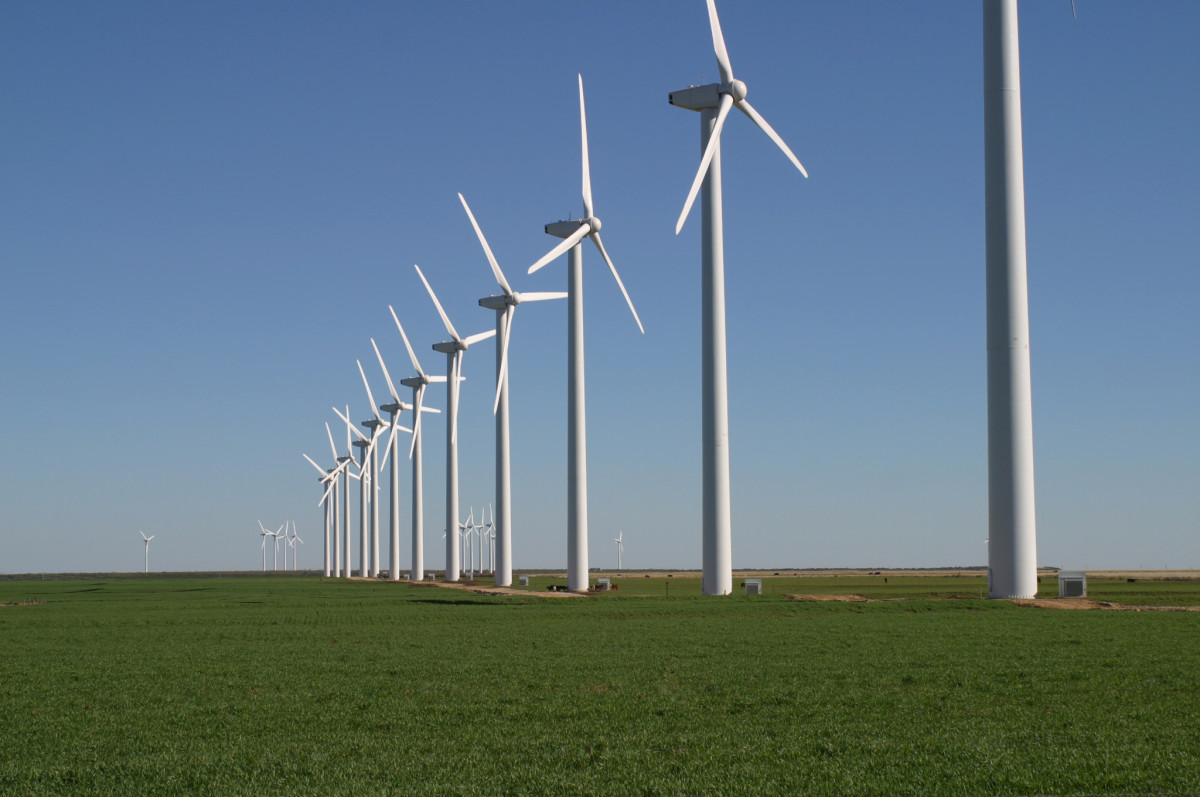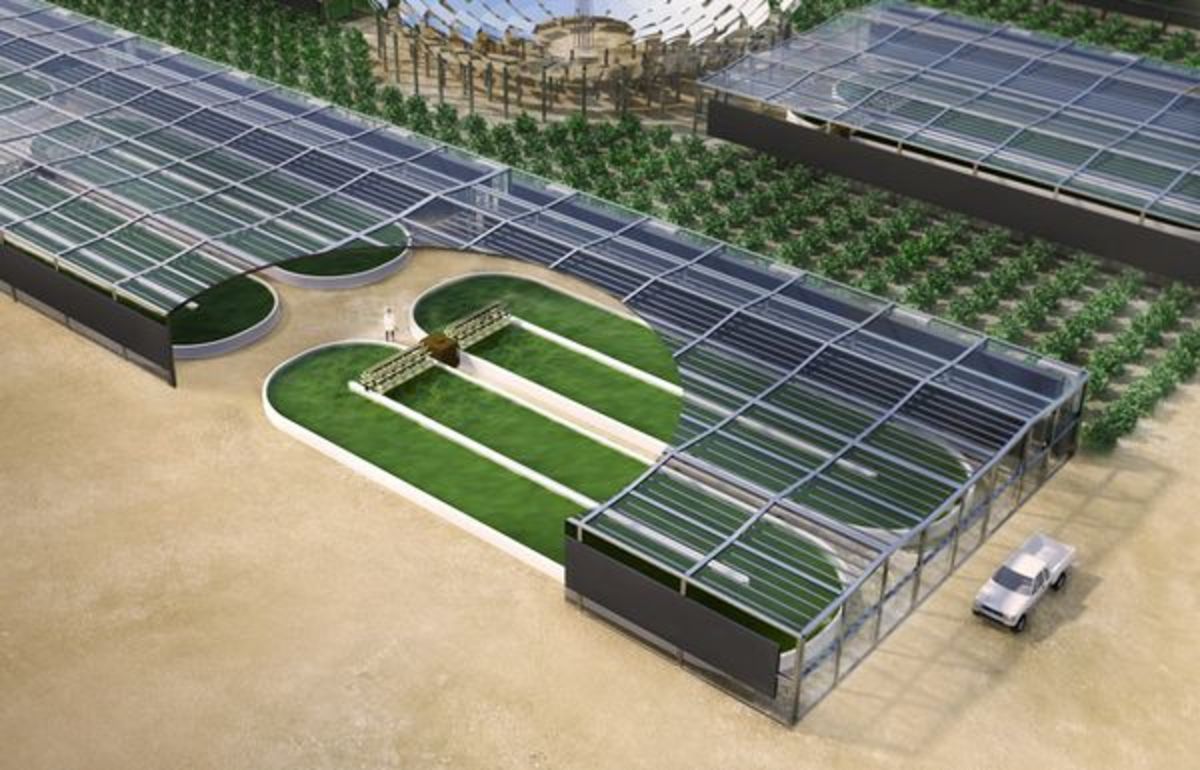Ice Dams
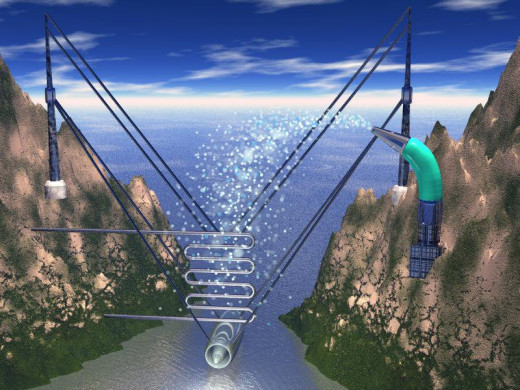
Need a dam? Build it with ice.
Suppose you found a place in a valley, where you wanted build a dam, but you couldn't afford to pay for the thousands of tons of concrete and steel, that you'd need for a conventional dam. What would you do? What material could you use as a substitute for concrete? The answer is ice. You can plug up a hole in a valley with a huge dam made of ice. The dam can be created solely for the purpose of irrigation, or it could even have a hydroelectric power plant built into it, so it can produce electricity.
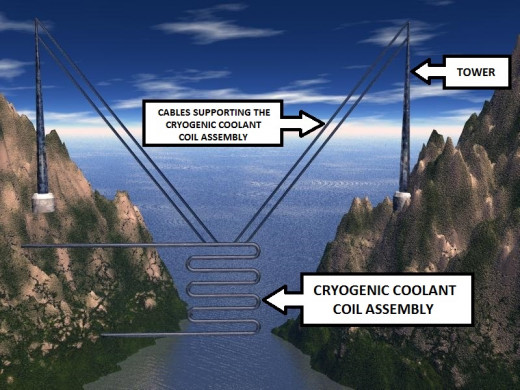
The illustration above shows the basic system for creating an ice dam. A set of coils is used to carry a cryogenic fluid, the fluid may be liquid nitrogen. A small cooling plant must be built nearby, to maintain the coolant at the proper temperature, and also to constantly pump the coolant through the coolant coil assembly. The entire coolant coil assembly would be supported by a set of cables. These cables would be attached to a set of towers, built on opposite sides of the dam site. Basically, the coils would just hang there, from their support cables.
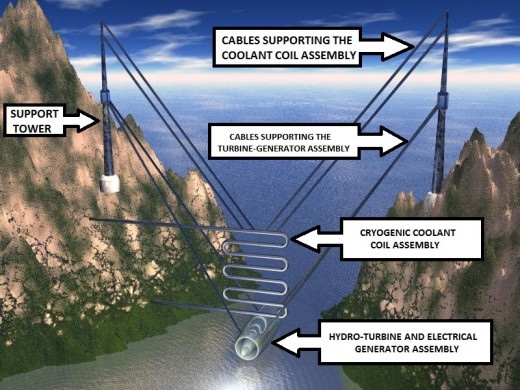
The illustration above shows a hydro-electric turbine-generator that has been added to the system. The turbine-generator unit is suspended from the same cables that support the coolant coil assembly. The turbine-generator unit is made so that water can flow through it, the flow of water causes the turbine blades to spin. The spinning turbine blades provide power to an electric generator, so the generator will produce electricity. The turbine-generator assembly and the coolant coil assembly will be completely covered with ice, when the dam is completed. If the dam is going to be large, ducts can be installed on either end of the turbine-generator unit.
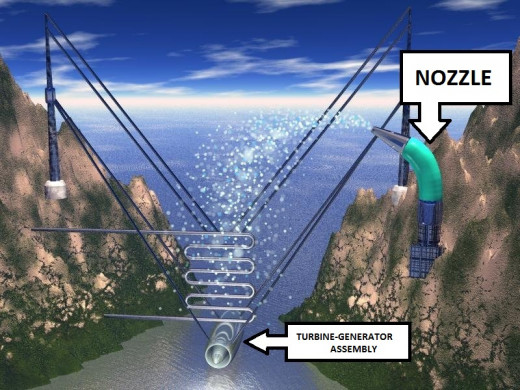
The illustration above shows a water nozzle spraying water on the coolant coil assembly. The water will freeze when it comes into contact with the coolant coil assembly. Although only one coolant coil assembly is shown in the illustration above, in an actual dam there may be several of these assemblies. You would add layers of coolant coils, as the layers of ice accumulated.
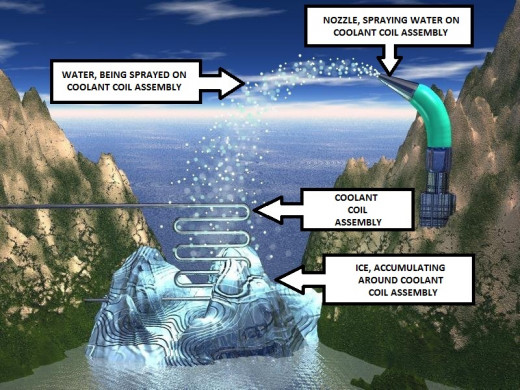
The illustration above shows ice accumulating on the coolant coil assembly, as the water nozzle sprays water on it. As additional layers of coolant coils are added, the cryogenic fluid to the bottom layers can probably be turned off, since the layers of ice on top will prevent the layers of ice on the bottom from melting. Turning off the fluid to the bottom layers allows you to save energy. Only the 'active' area of the dam needs to be cooled. The 'active' area is the part of the ice dam that is actually in the process of being frozen. The layers of ice underneath it are already frozen solid, so they no longer require electricity to keep them frozen.
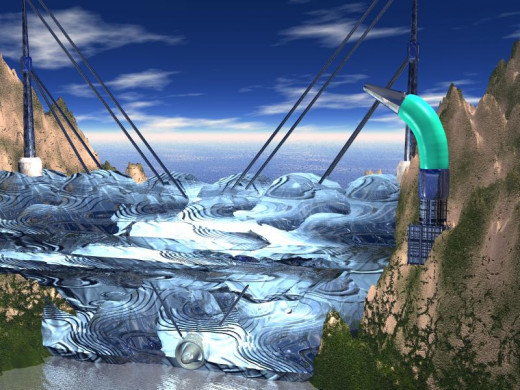
The illustration above shows the completed ice dam. If an ice dam is large enough, it can hold back a huge amount of water, and create a huge reservoir for irrigation. If the ice dam is large enough, it can produce a significant amount of electricity. An ice dam may be built during the winter or summer, but ice dams would be best for arctic or sub-arctic climates, where the weather is already cold most of the time. In a sub-arctic climate, you could build an ice dam during the summer, and it would probably require very little maintenance during the long winter.
One application of an ice dam in an arctic climate would be to provide electric power for a construction project, for example, the construction project may involve the construction of a geothermal power plant, and a domed city that is heated by geothermal power. After the domed city and it's geothermal power plant is completed, the ice dam can be allowed to melt, since it is no longer needed. An ice dam would have very little impact on the environment, so it would be suitable for many wilderness areas.
Ice dams may be built with a layer of plastic foam insulation, on their exterior surfaces. This foam layer, made of recycled plastic, would help prevent the ice from melting. Foam-covered ice dams would most likely be permanent or semi-permanent installations.
Anthony Ratkov, January 15, 2014.







